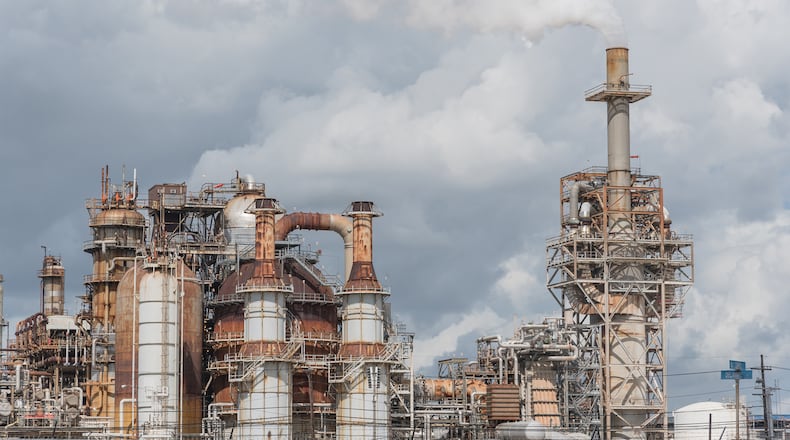Neighbors of refineries can see the glowing flares and visible plumes of air pollution rising into the sky.
But water pollution often happens at ground level, or below, out of sight for both local residents and environmental regulators.
In a new report, the Environmental Integrity Project – a Washington, D.C.-based environmental nonprofit organization that advocates for more effective enforcement of environmental laws – tallied toxic discharges of unregulated pollutants self-reported by refineries.
They found that seven of the nation’s 10 worst polluters of total dissolved solids operated along the Texas coast.
“Oil refineries are major sources of water pollution that have largely escaped public notice and accountability,” said Eric Schaeffer, the nonprofit’s executive director. “Texas is an industry state. I’m not surprised to see such big discharges.”
Schaeffer, a former enforcement director at the Environmental Protection Agency, said federal pollution standards dating to the 1980s allow refineries to dump liquid waste into public waterways. The organization analyzed unregulated discharges that the EPA does not address in its rules for refineries.
According to the report by the Environmental Integrity Project, federal law regulates just 10 pollutants from refineries’ liquid discharge through standards last updated in 1985.
The nonprofit is calling on the EPA to update its rules and reduce water contamination from the refinery sector.
The report named Exxon’s Baytown refinery as the nation’s highest-volume water polluter of total dissolved solids, which include chloride and sulfates. Schaeffer said dissolved solids are highly saline, harmful to aquatic life and taxing on water treatment plants.
Because dissolved solid discharges are not regulated for refineries, none of the pollution broke the law.
Data from the EPA shows that Exxon also discharges toxins including oil and grease, hexavalent chromium, benzene, chlorine, copper, zinc, sulfide, ammonia and more into Galveston Bay.
Exxon did not respond to a request for comment. The oil giant’s Baytown plant is part of the nation’s largest petrochemical complex, which rings the waterways southeast of Houston, the so-called Bayou City, where more than 2 million people live.
Refineries turn oil and petroleum gas into fuels, chemicals and plastics.
While the bayous of West Houston are open for recreation, those in the largely Black and Hispanic neighborhoods of East Houston are walled off by refineries. The public never sees what happens on their banks.
“It’s this complete unawareness that industry is even dumping into the bayous,” said Bryan Parras, an organizer with the Sierra Club who grew up in Houston’s East End. “It’s all ending up in the bay and the Gulf of Mexico where people swim and fish. That’s not talked about a whole lot.”
In order to reduce dumping, Parras said, inspectors could make unannounced visits to refineries, test their waste outflows and apply substantial fines when they violate permits.
Enforcement of federal standards falls to the states.
This article comes from our partner, Inside Climate News, the Pulitzer prize-winning nonprofit, independent news organization that covers climate, energy and the environment.
About the Author
Keep Reading
The Latest
Featured


